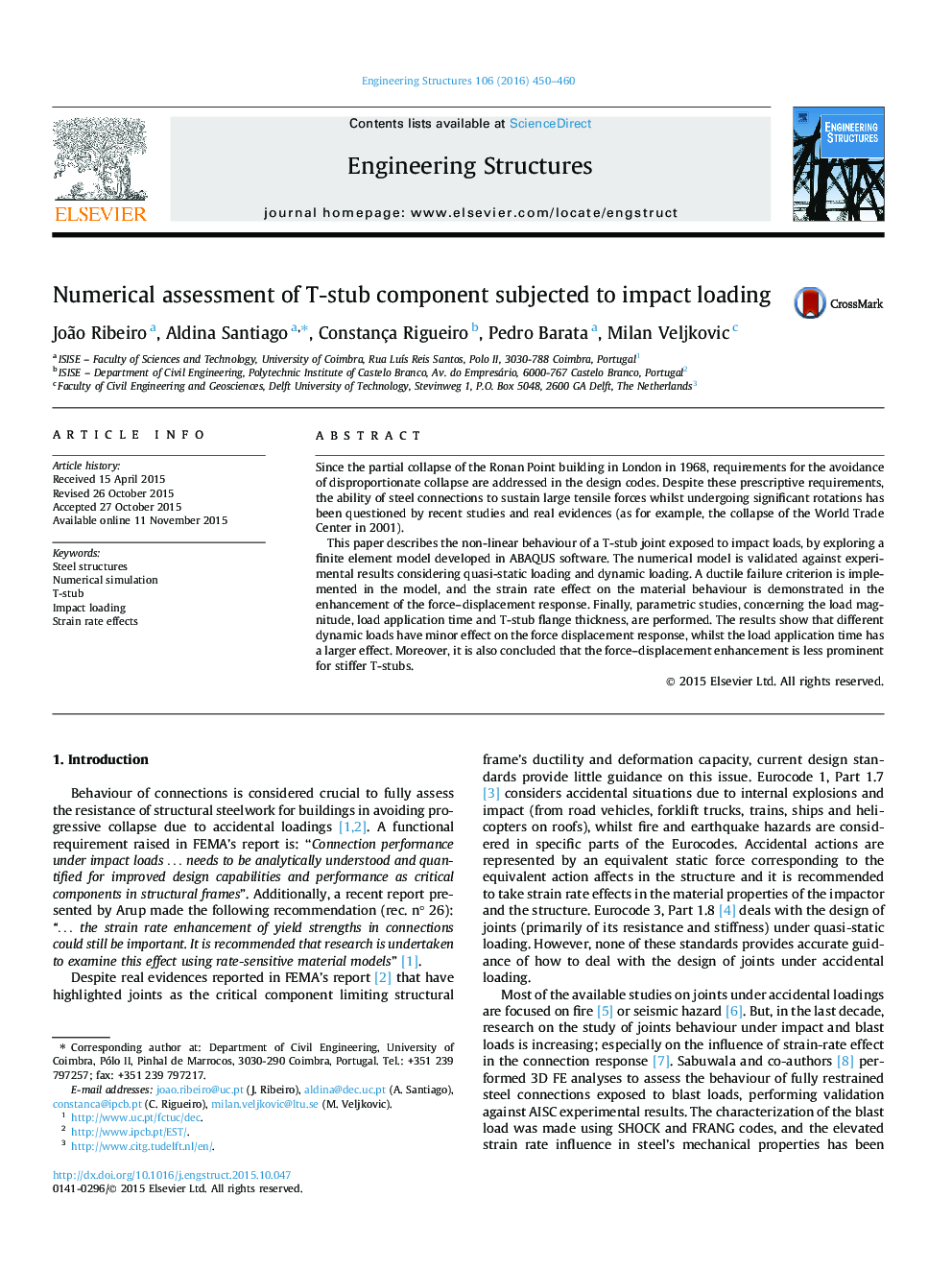| کد مقاله | کد نشریه | سال انتشار | مقاله انگلیسی | نسخه تمام متن |
|---|---|---|---|---|
| 266004 | 504338 | 2016 | 11 صفحه PDF | دانلود رایگان |

• Numerical analysis to define the non-linear behaviour of a T-stub under impact loads.
• The strain rate effect on the material law enhances the force–displacement response.
• Force–displacement enhancement is less prominent in for stiffer T-stubs.
Since the partial collapse of the Ronan Point building in London in 1968, requirements for the avoidance of disproportionate collapse are addressed in the design codes. Despite these prescriptive requirements, the ability of steel connections to sustain large tensile forces whilst undergoing significant rotations has been questioned by recent studies and real evidences (as for example, the collapse of the World Trade Center in 2001).This paper describes the non-linear behaviour of a T-stub joint exposed to impact loads, by exploring a finite element model developed in ABAQUS software. The numerical model is validated against experimental results considering quasi-static loading and dynamic loading. A ductile failure criterion is implemented in the model, and the strain rate effect on the material behaviour is demonstrated in the enhancement of the force–displacement response. Finally, parametric studies, concerning the load magnitude, load application time and T-stub flange thickness, are performed. The results show that different dynamic loads have minor effect on the force displacement response, whilst the load application time has a larger effect. Moreover, it is also concluded that the force–displacement enhancement is less prominent for stiffer T-stubs.
Journal: Engineering Structures - Volume 106, 1 January 2016, Pages 450–460